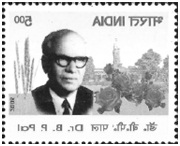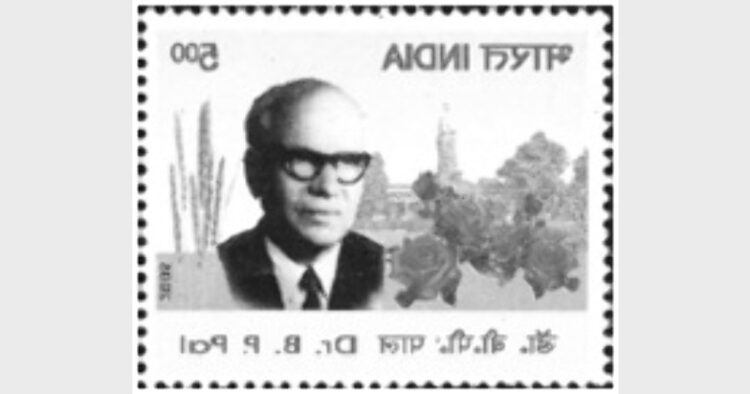 Dr BP Pal, the famous agricultural scientist, was born in Punjab on May 26, 1906. His father later moved to Burma or the current Myanmar, then a British colony, to work as a Medical Officer. Dr Pal studied at St. Michael’s School in Maymyo, Burma. Apart from being a brilliant student, Pal was also fond of gardening and painting.
Dr BP Pal, the famous agricultural scientist, was born in Punjab on May 26, 1906. His father later moved to Burma or the current Myanmar, then a British colony, to work as a Medical Officer. Dr Pal studied at St. Michael’s School in Maymyo, Burma. Apart from being a brilliant student, Pal was also fond of gardening and painting.
In 1929 Dr Pal qualified for the Masters degree in Botany at Rangoon University where he also won the Matthew Hunter Prize for topping among all science streams in the university. He was awarded a scholarship which permitted him to pursue his post graduate education at Cambridge. Dr Pal worked with Sir Frank Engledow on hybrid vigour in wheat at the coveted Plant Breeding Institute. This provided the basis for the design of the Green Revolution, essentially based on the commercial exploitation of wheat hybrids.
In March 1933, Dr Pal was appointed as Assistant Rice Research Officer in the Burmese Department of Agriculture. In October the same year, he moved to Pusa, Bihar, to become the Second Economic Botanist at the Imperial Agricultural Research Institute, which was renamed as the Indian Agricultural Research Institute (IARI) in 1947. IARI was earlier located in Pusa, Bihar, but after a severe earthquake which damaged its main building, the Institute was shifted to New Delhi in 1936. Dr Pal was the first Indian Director of the IARI in New Delhi at its campus, which was named Pusa in 1950. He continued to serve in that capacity until May 1965, when he became the first Director General of the Indian Council of Agricultural Research (ICAR). He held this position from May 1965 to January 1972, during which period the Green Revolution was launched with outstanding success.
Dr. Pal’s major contribution to the scientific aspects of the Green Revolution was in the area of wheat genetics and breeding. He observed that rust disease was largely responsible for low yields of wheat and therefore, developed a systematic breeding method to develop varieties with resistance to rust disease. Then India was reeling under a severe food crisis and was known in the world as a country of starving people. Dr. Pal was instrumental in changing India’s global image and it soon became an exporter of food.
Dr Pal was also a rose breeder of distinction and created several varieties. He was the founder President of the Rose Society and Bougainvillea Society. He also founded the Indian Society of Genetics and Plant Breeding and edited the Indian Journal of Genetics and Plant Breeding for 25 years. He was elected as a Fellow of the Royal Society in 1972 and received numerous awards including the Padma Vibhushan.














Comments